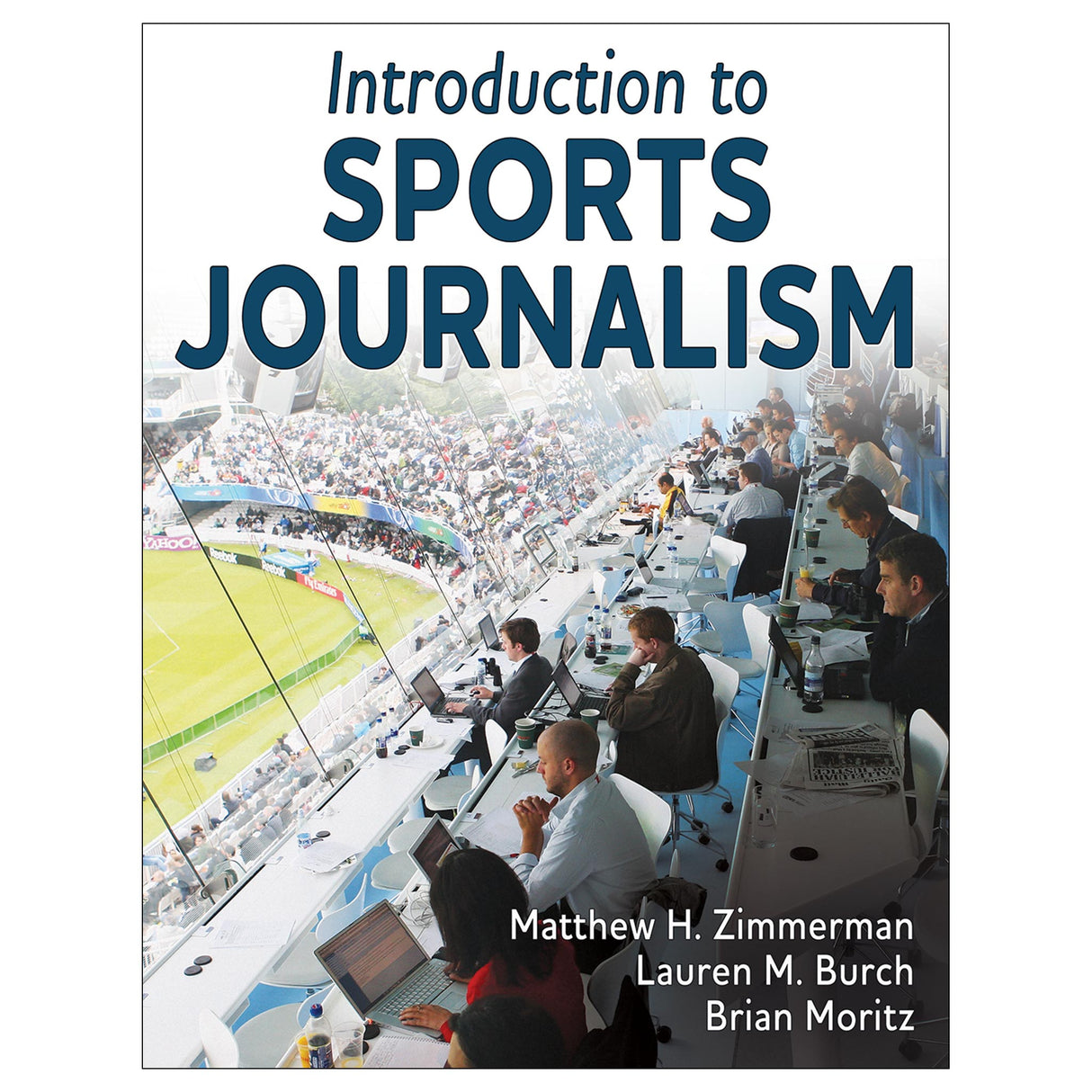Introduction to Sports Journalism epub
$104.95 CAD
Access Duration: 10 Years
Embracing this dynamic, Introduction to Sports Journalism provides students with the practical knowledge and tools to succeed in the evolving field of sports journalism. While other texts repeat the “sports journalism is changing” refrain, Introduction to Sports Journalism sheds light on how and why it’s changing. Through these discussions students are challenged to formulate their own perspectives on contemporary sports journalism, journalistic expression, and how these concepts fit in today’s evolving media and societal landscapes.
The text begins with an overview and history of sports journalism and traditional media. Also discussed is the impact of today’s nontraditional journalists: the bloggers and videographers outside traditional media channels.
The core of the text then focuses on developing practical skills required to work in the sports journalism field, including knowing how and what to write to craft compelling stories. Much attention is paid to analytics, what they are, their variations across sports, and how to interpret and use them effectively. Also featured are digital media (blogs, podcasts, and social media platforms) and the technological tools used to create content.
Sports journalism and public relations often overlap, and the text explains the nuances of the respective functions. Public relations tools such as media guides and game notes are presented, as well as a section on crisis communication.
The pressure to “break the story” can tempt even the best journalist to plagiarize or fabricate stories or skip fact checks. The text covers journalism ethics and provides best practices for avoiding traps. Racial and gender bias and the importance of providing equitable coverage are also discussed. Additionally, legal issues such as copyright, privacy, discrimination, defamation, reporter’s privilege, and first amendment rights are addressed.
The book concludes with a discussion of career paths and challenges facing the industry. The landscape is changing and, in response, the authors provide career advice for students entering the field.
In the chapters you’ll find Industry Profile sidebars featuring interviews and conversations with practicing sports journalists. Also included are Time-Out activities throughout the chapters and end-of-chapter discussion questions, applied activities, and practical exercises, all designed to engage students more fully with the content and apply learning to real-life situations.
Introduction to Sports Journalism provides a comprehensive overview of contemporary sports journalism—spanning all media platforms and sport organizations—to prepare students for a dynamic career in sports journalism.
Audience
Undergraduate textbook for courses in sport communication or sports journalism.The Value of Sports Journalism
Content Creators
Rise of Social Media
Online Media and the Role of Access
Female Sports Journalists
Social Justice Issues
The Power of Sport as a Brand
Stories About People
What You Can Expect From This Book
Summary
Chapter 2. The Evolution of Sports Journalism
Development and Expansion of Sport Media
Traditional Media’s Control of the Narrative
Athlete Control of the Narrative
Traditional Media Navigates Challenges
The Internet and the Boom of Sports Sites
Pivot to Video
The Market for Quality Sports Journalism
Blurring the Lines Between Journalism and Public Relations
Summary
Chapter 3. News Gathering and Writing
Sports Writing Basics
News Gathering
Media Theory in Sports Journalism
Summary
Chapter 4. News Gathering in the Digital Age
Nonhuman Sources
Statistics
Analytics
Sport-by-Sport Analytics
Databases and Other Online Resources
Summary
Chapter 5. Digital Sports Media
Mobile Journalism
News Consumers
Content Creators
Social Media
X (Twitter)
Instagram and YouTube
Blogs
Podcasts
Artificial Intelligence
Summary
Chapter 6. Sports Journalism and Public Relations
Public Relations
Sport Public Relations
Building and Maintaining Relationships With Key Publics
Communicating to Key Publics Through News Media
Communicating to Key Publics Through Organizational Media
Communicating to Key Publics Through Digital and Social Media
Crisis Communications
Summary
Chapter 7. Media Ethics and Law
Defining Ethics
Ethics, Law, and Writing
Managing Bias
Social Media and Ethics
Sports Gambling and Ethics
Workshop Ethical and Legal Dilemmas
Summary
Chapter 8. Career Paths in Sports Journalism
The Traditional Path
The Economics of Sports Journalism
Online Opportunities
Future-Proof Career Advice
Summary
Chapter 9. The Future of Sports Journalism
A Quick Look at the State of the Profession
Where Do We Go From Here?
Online Media
Advancements in Technology and New Competitors
Needed Skills
Sport Media Startups
Women and Minoritized Groups in Sports Journalism
Local Engagement
Summary
Managing Media Bias
The Use of Artificial Intelligence (AI) in Sports Journalism
All ancillaries are free to adopting instructors through HKPropel.
Instructor guide. Includes a sample syllabus, sample course outline, chapter objectives, instructor notes for the book’s Time-Out exercises, and recommended responses to the end-of-chapter discussion questions and end-of-chapter applied activities. Also features additional practical application exercises for each chapter that may be assigned by instructors using their learning management system. The exercises are accompanied by recommendations and guidance for the instructor.
Test package. Contains 180 questions in true-false, fill-in-the-blank, essay and short-answer, and multiple-choice formats. The files may be downloaded for integration with a learning management system or printed for use as paper-based tests. Instructors may also create their own customized quizzes or tests from the test bank questions.





